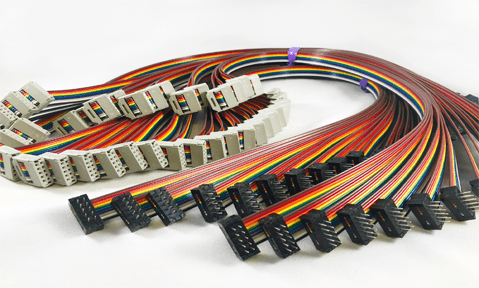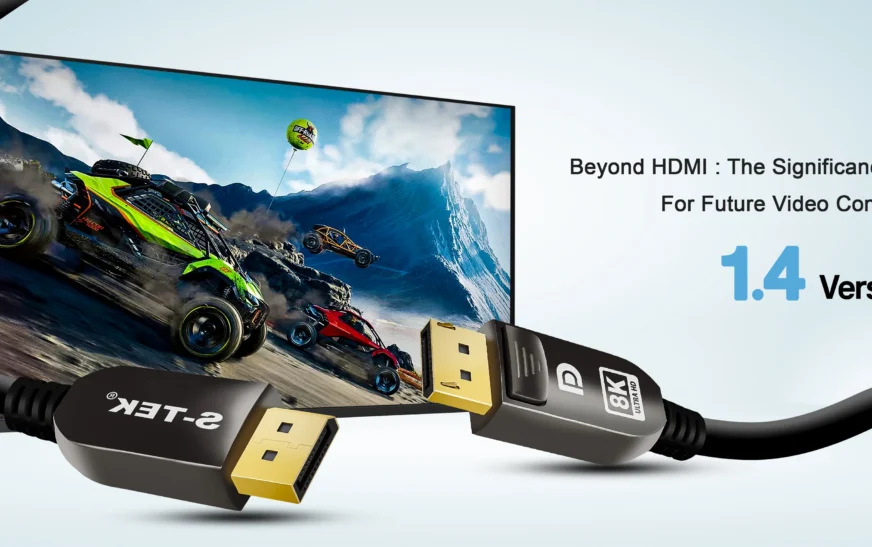HDMI ports are now considered to be the standard for smooth audio-visual connectivity in today’s digital world. HDMI (High-Definition Multimedia Interface) ports are essential to modern multimedia, whether you’re setting up a home theater system, connecting a computer to a display, or connecting a television to a game console. HDMI has revolutionized the way we consume entertainment by providing both high-definition video and multi-channel audio over a single connection, guaranteeing a seamless and excellent experience.
The definition of HDMI ports, their varieties, applications, and the reasons behind their widespread adoption as the norm for multimedia connections in both homes and offices will all be covered in this article.

1. First off, what is HDMI?
The High-Definition Multimedia Interface (HDMI) is a proprietary audio/video connection that enables the transmission of uncompressed video and compressed or uncompressed digital audio from a source device (such as a Blu-ray player, gaming console, or PC) to a display (like a TV or monitor). HDMI’s capability to transmit both audio and video through a single cable has made it a widely used and convenient solution for both consumer electronics and professional applications.
Debuting in 2003, HDMI supplanted older analog standards like composite and VGA, providing substantial enhancements in picture and sound quality. HDMI is currently the most prevalent interface for high-definition and ultra-high-definition (UHD) displays, including HDTVs, 4K TVs, and modern computer monitors.
2. HDMI’s past

HDMI was created by a consortium of seven leading technology companies: Hitachi, Panasonic, Philips, Sony, Toshiba, RCA, and Silicon Image, with the aim of establishing a standard that simplifies connections and enhances performance. During the early 2000s, consumer electronics were in the process of shifting from analog to digital, and the existing connection methods were inadequate for handling the bandwidth demands of high-definition content.
The initial iteration of HDMI, HDMI 1.0, debuted in December 2002, providing a maximum bandwidth of 4.95 Gbps, sufficient to accommodate 1080p resolution and 8-channel audio. Throughout the years, HDMI has undergone multiple revisions, each enhancing its capabilities to adapt to advancing display technologies such as 4K and 8K video, as well as sophisticated audio formats like Dolby Atmos.
3. Evolution of HDMI Standards
HDMI has undergone developments over time, introducing new versions that offer higher resolutions, expanded color support, and improved audio quality. Here are the main iterations of HDMI and their respective capabilities:
a. HDMI 1.0
Debuted: December 2002
Throughput: 4.95 Gbps
Resolution Support: 1080p at 60Hz
Audio: 8-channel uncompressed digital audio
b. HDMI 1.4
Debuted: May 2009
Throughput: 10.2 Gbps
Resolution Support: 4K at 30Hz
Extra Features: Ethernet over HDMI, 3D video support
c. HDMI 2.0
Debuted: September 2013
Throughput: 18 Gbps
Resolution Support: 4K at 60Hz
Audio: Support for up to 32 audio channels
Extra Features: Dynamic auto lip-sync, enhanced color depth (HDR)
d. HDMI 2.1
Debuted: November 2017
Throughput: 48 Gbps
Resolution Support: 8K at 60Hz, 4K at 120Hz
Extra Features: Variable refresh rate (VRR), improved Audio Return Channel (eARC), and dynamic HDR support
Each version of HDMI has brought enhancements in throughput, resolution, and overall functionality, ensuring that the standard remains aligned with the requirements of modern home entertainment and gaming.
4. Types of HDMI Connectors
The standard protocol for transmitting audio and video is used by HDMI ports, but there are various types of HDMI connectors designed for different purposes.
a. Standard HDMI (Type A)
The most common version of the HDMI connector is the Type A, which is found on televisions, monitors, gaming consoles, and Blu-ray players. It supports all current HDMI standards, from HDMI 1.0 to HDMI 2.1, and has 19 pins.
b. Mini HDMI (Type C)
Smaller than the standard HDMI connector, the Mini HDMI is commonly found on portable devices such as cameras, tablets, and some laptops. Despite its more compact form factor, it also has 19 pins like the standard HDMI connector.
c. Micro HDMI (Type D)
The Micro HDMI connector is even smaller than the Mini HDMI and is often used in ultra-portable devices like smartphones and action cameras. Despite its compact size, it also supports high-definition video and audio.
d. HDMI Ethernet Channel
Some HDMI cables support Ethernet over HDMI, enabling the transmission of both audio/video and internet data over a single cable. This reduces cable clutter and simplifies setup for smart TVs and other network-enabled devices.
5. Uses of HDMI Ports
a. Televisions and Home Theaters
The primary method for connecting devices to HDTVs, 4K, and 8K displays is through HDMI ports. Blu-ray players, streaming devices such as Apple TV and Roku, and gaming consoles such as the PlayStation and Xbox all utilize HDMI connections to deliver high-definition video and surround sound audio to televisions and home theater systems.
b. Computers and Monitors
HDMI ports are featured in most modern computers and laptops for connecting external monitors. HDMI is also commonly used in dual-monitor configurations and for connecting projectors during presentations. The support for high-definition video and audio makes HDMI well-suited for professional use in graphic design, video editing, and gaming.
c. Gaming Consoles
HDMI is utilized by gaming consoles like the PlayStation 5, Xbox Series X, and Nintendo Switch to connect to displays, enabling high-definition gaming. HDMI 2.1 has proven especially beneficial for gaming enthusiasts, offering support for features like Variable Refresh Rate (VRR) and Auto Low Latency Mode (ALLM) that enhance the gaming experience by reducing screen tearing and input lag.
d. Audio Equipment
HDMI also provides support for Audio Return Channel (ARC), allowing a television to transmit audio back to an AV receiver or soundbar, simplifying the connection process for home theater systems. The enhanced version, eARC (introduced with HDMI 2.1), enables higher-quality, uncompressed audio formats like Dolby Atmos and DTS.
e. Projectors
In conference rooms, classrooms, and home theaters, HDMI is the standard connection for projectors. HDMI ensures high-definition video quality, making it ideal for displaying presentations, videos, and movies.
6. Key Benefits of HDMI Ports
a. Superior Audio and Video Quality
The main benefit of HDMI is its ability to transmit high-definition video and multi-channel audio using just one cable. This eliminates the need for separate cables for audio and video, simplifying setup and reducing cable clutter.
b. Flexibility
HDMI ports are highly adaptable, accommodating a wide variety of devices and applications, from TVs and gaming consoles to computers and audio systems. This flexibility has established HDMI as the standard for multimedia connections.
c. Embraces Advanced Capabilities
By supporting features like HDR, VRR, and eARC, HDMI continues to advance, incorporating state-of-the-art technology to enhance both picture and sound quality. These features ensure HDMI’s relevance in the age of 4K, 8K, and advanced surround sound systems.
d. Interoperability
HDMI is backward-compatible, allowing newer HDMI devices to connect to older HDMI devices, though they may not support all the latest features such as 4K resolution or HDR.
7. Future of HDMI Ports
The introduction of HDMI 2.1 and its backing for 8K resolution positions HDMI favorably to remain the standard for multimedia connectivity in the upcoming years. As display technologies progress, HDMI ports will continue to play a central role in delivering top-notch audio and video to consumers, gamers, and professionals alike.
a. 8K Video and Beyond
Despite the increasing prevalence of 4K content, the shift towards 8K video will necessitate high-bandwidth connections such as HDMI 2.1 to manage the augmented data load. HDMI will remain crucial for transmitting ultra-high-definition content, particularly in home theaters and professional video production.
b. Advanced Audio Formats
Given the rising popularity of surround sound formats like Dolby Atmos and DTS, HDMI’s support for high-quality, uncompressed audio will be vital for providing immersive sound experiences in both home theaters and commercial settings.
In today’s multimedia world, HDMI ports play a crucial role in connecting high-definition video and audio, offering a flexible solution for various devices. From linking a 4K TV to a gaming console to establishing a home theater, HDMI simplifies the process of enjoying top-notch content. With ongoing advancements in HDMI technology, such as new features like






